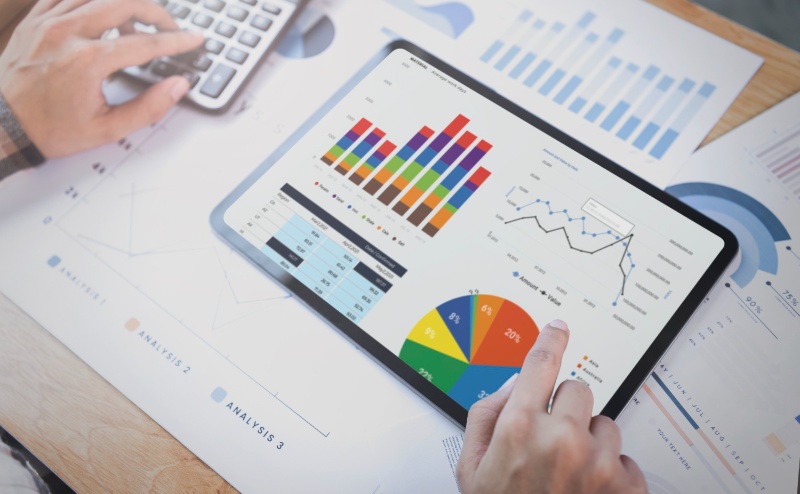Optimizing Self-Service Demo Analytics for SaaS Businesses: Essential Metrics & Insights

Discover how to optimize your self-service demo analytics to improve user experience, drive higher conversion rates, and enhance your PLG strategy. Learn essential metrics and data-driven insights for success!
If you're a SaaS business, then you know how important having a strong PLG strategy is. One of the strongest arms of a good PLG strategy is creating easy channels for people to experience your product firsthand. A well-designed website, combined with bite sized self-service demos that are specific to use cases, ICPs and industries are a surefire way to accomplish this.
Self-service demos are excellent for lowering your CAC, improving response rates on your targeted email campaigns, and shortening your sales cycle overall. They also result in more MQLs for your sales guys to work on. Plus, they increase your product's viral growth potential by making it easy for customers to champion you, without having to invest too much of their own time and effort.
But a good self-service demo without the right analytics behind it is a little bit like a great birthday cake - it's incomplete without all that frosting. The ability to collect, analyze, and derive insights from demo analytics gives you superpowers when it comes to creating demos that just… work. And honestly, with all the tools available today, analytics is nice and easy (and inexpensive too!).
Why You Need Analytics for Your Self-Service Demos
Yes, you know your ICP. You know what their needs and struggles are, and what they're looking for.
BUT.
This is a self-service demo we're talking about. You aren't in the room. You can't read their body language. You can't answer their questions. You certainly can't help them out when they get stuck somewhere.
Ergo, analytics. When you have the right analytics in place, you can:
Find where users are getting stuck: and simplify those sections, or add more on-screen guidance to improve self-service demo user experience.
Find where they lose interest: and personalize self-service demos for better engagement.
Find which demos are working best: and calibrate your other demos.
Find which demos aren't generating conversions: and gather friendly feedback to understand why.
Armed with these insights, you're able to modify your sales process to better fit what your customers need from you, while leveraging your most effective sales playbooks. You're also able to better arm your salespeople with these insights, further improving the quality of live demos and sales conversations. You find it easier to identify bottlenecks and fix them, and you're able to work on your product in real-time, improving as you go.
Essential Metrics in Self-Service Demo Analytics

What we measure, we deliver. When it comes to self-service demos, it's best to think of these metrics as a combination of how you measure your website performance, and how you measure live demos.
From website metrics, you can borrow:
Number of users and sessions
These metrics provide a quick analysis of your marketing efforts. When you plot the data over time, you can see how your campaigns drive traffic and how many times users engage with the demo.
Average session duration and average pages/demos per session
These tell you how easy it is to find the information users are looking for. Did they go looking for a different demo? Might be worth asking why.
Ratio of new to returning visitors
As a rule of thumb, returning visitors tends to mean the demo was effective in getting the point across, and new visitors indicates the marketing campaign was effective in getting people to the demo in the first place.
Bounce rates and drop off points
These can mean you have a technical problem, or your demo and content isn't targeted enough, your campaign isn't targeted enough, or you just don't have the right calls to action setup.
From demo metrics, you can borrow:
Engagement rate
This tells you how engaged users are with your demo, and includes data on average time spent, number of interactions, and clicks.
Conversion rate
Of course. This one measures the percentage of users who take a desired action after engaging with your demo, such as signing up for a trial or making a purchase or filling up a contact form for sales.
User feedback
This works best with friendly audiences, through forms often provides invaluable qualitative insights.
Data Analysis: How to Make Sense of Your Metrics
The first thing we recommend you do is data visualization. Nothing hides more than a spreadsheet - finding a trend in spreadsheet data is so much harder than a simple graph! Wherever possible, create dashboards and use visualizations that instantly make sense to your team.
Trend Analysis comes next - you want to know where you've been, and where you're going. Use segmentation to break down your data into segments based on demographics, user behavior, or other relevant factors. These give you deeper insights into how different groups engage with your demo. Then, use hypothesis testing, when you're ready to put this data to use in the form of modifications or updates.
Of course, there's no limit to the tools you can use.
Use statistical analysis techniques and data modeling to derive both descriptive and inferential analysis from your data.
Use diagnostic analysis to find problems - existing and upcoming. Use AI powered analytics - it's not as expensive as you think, and the insights are priceless.
Use predictive analysis for forecasts, and work to refine these tools till they're giving you what you need.
Develop Optimization Strategies for Self-Service Demos
That's the whole point, right? Once you've digested your data and arrived at those key insights, put them to work.
Enhance your user experience: by making key improvements like simplifying navigation, making instructions clearer, or redesigning certain elements for better usability.
Improve personalization: and it'll pay off in improved engagement and conversion rates.
A/B test everything: You don't know what you don't know. Put two versions out, and see which one works better. Repeat.
Optimize marketing channels: Invest more resources in the channels that are performing best. Simple.
Implement user feedback and tell them about it: If users took the time to tell you what's wrong, take the time to tell them you fixed it. Back that up with a freebie or a discount, and you're guaranteed to generate some love.
Continuously monitor and iterate: Customer preferences change all the time. What's working today isn't guaranteed to work tomorrow. Keep your eye on the ball.
Conclusion
Your self-service demo is only as effective as you make it. And as effective as the marketing strategy that sits behind it. Use analytics on both sides of the equation to build from strength to strength. By arming yourself with the right data, and the right tools to monitor performance, you're investing in your ability to understand and predict the ways in which your customer sentiment moves.
It takes doing, but then, everything worth doing does!
Comments
Your comment has been submitted successfully!